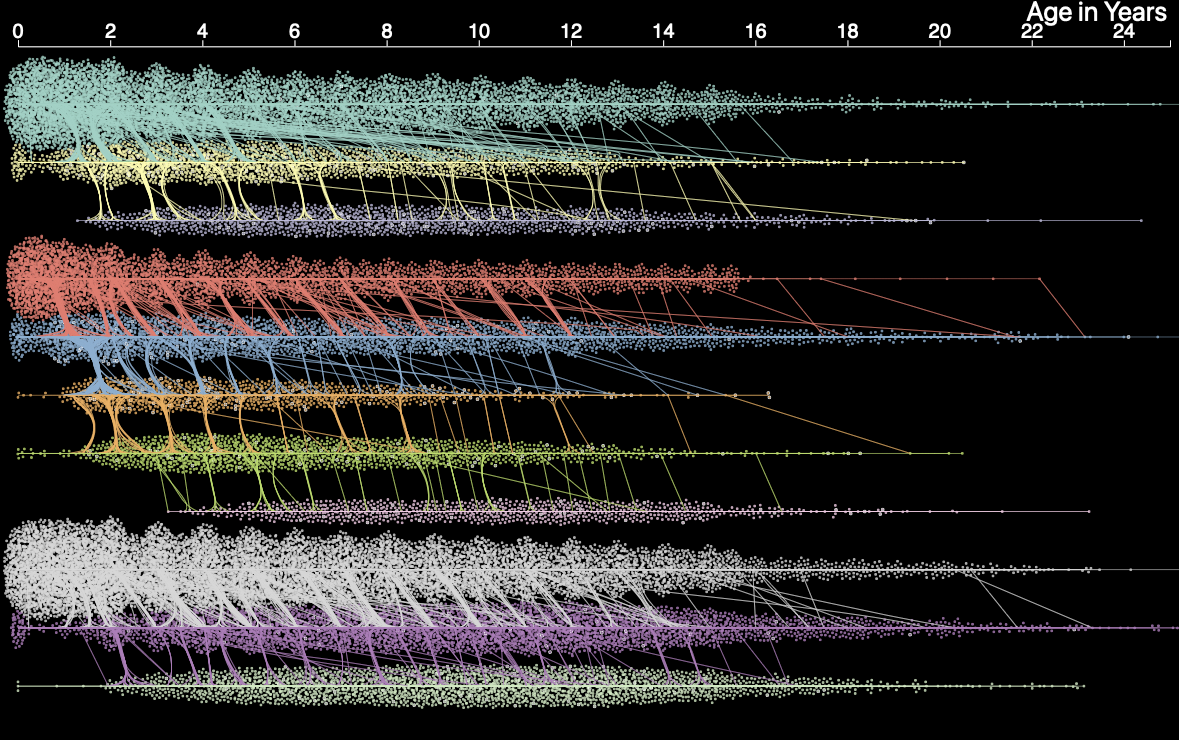 In this paper, we used Continuous-Time Hidden Markov model to analyze biomarker data to reveal three distinct autoimmune trajectories and their varying degrees of risk for T1D. This image shows those trajectories, in eleven distinct states, as bundles of color-coded dots (individual child’s age-specific results) and lines (links between visits over time). Starting from the top: the first three horizontal lines, the next five, and the last three.
In this paper, we used Continuous-Time Hidden Markov model to analyze biomarker data to reveal three distinct autoimmune trajectories and their varying degrees of risk for T1D. This image shows those trajectories, in eleven distinct states, as bundles of color-coded dots (individual child’s age-specific results) and lines (links between visits over time). Starting from the top: the first three horizontal lines, the next five, and the last three.
Abstract
Development of islet autoimmunity precedes the onset of type 1 diabetes in children, however, the presence of autoantibodies does not necessarily lead to manifest disease and the onset of clinical symptoms is hard to predict. Here we show, by longitudinal sampling of islet autoantibodies (IAb) to insulin, glutamic acid decarboxylase and islet antigen-2 that disease progression follows distinct trajectories. Of the combined Type 1 Data Intelligence cohort of 24662 participants, 2172 individuals fulfill the criteria of two or more follow-up visits and IAb positivity at least once, with 652 progressing to type 1 diabetes during the 15 years course of the study. Our Continuous-Time Hidden Markov Models, that are developed to discover and visualize latent states based on the collected data and clinical characteristics of the patients, show that the health state of participants progresses from 11 distinct latent states as per three trajectories (TR1, TR2 and TR3), with associated 5-year cumulative diabetes-free survival of 40% (95% confidence interval [CI], 35% to 47%), 62% (95% CI, 57% to 67%), and 88% (95% CI, 85% to 91%), respectively (p < 0.0001). Age, sex, and HLA-DR status further refine the progression rates within trajectories, enabling clinically useful prediction of disease onset.